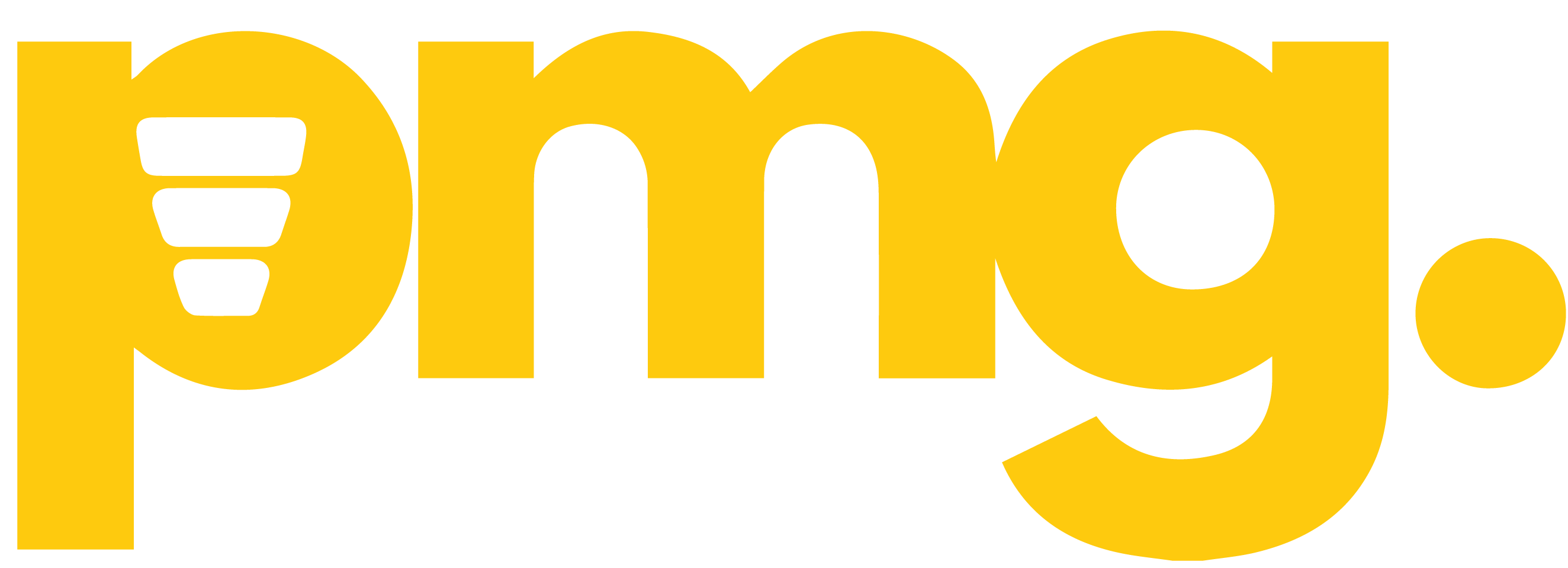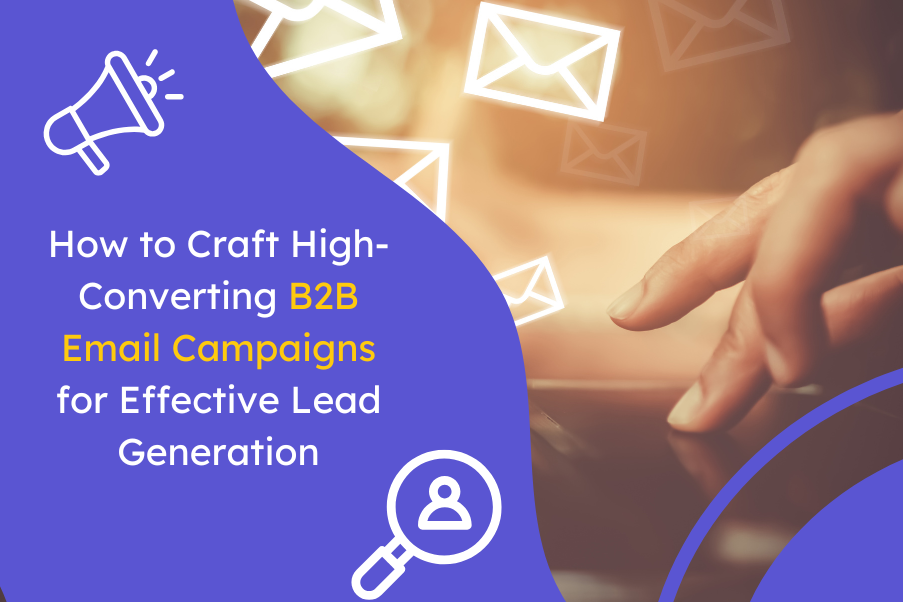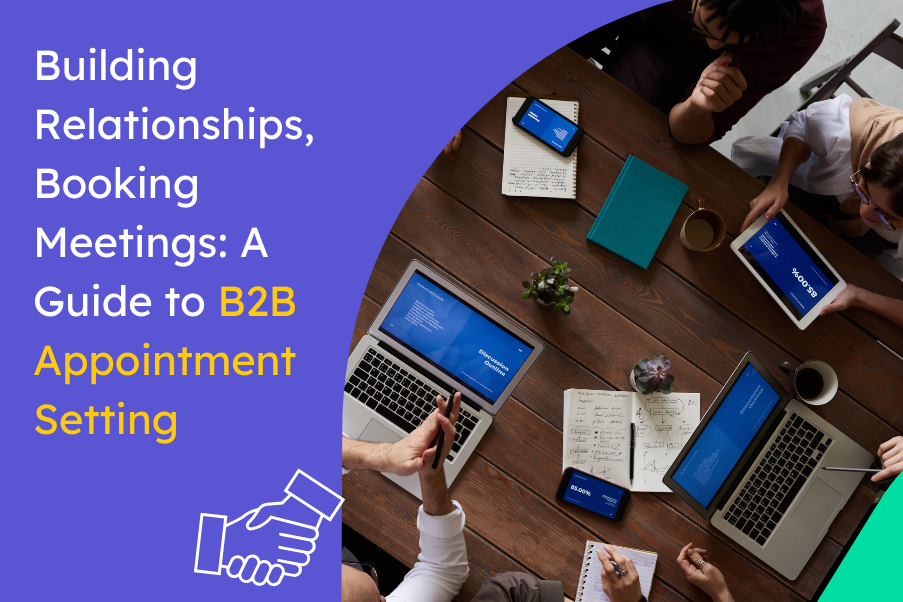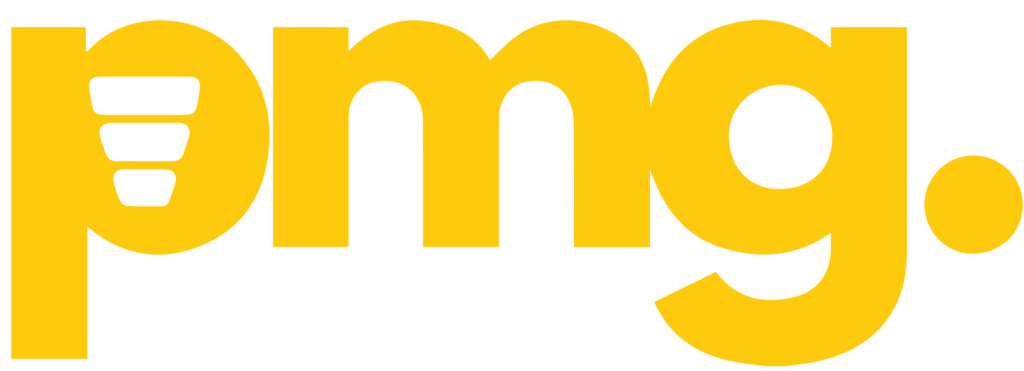In a digital world filled with endless marketing channels, email remains a powerhouse for B2B businesses. A well-executed B2B email campaign is more than just sending messages instead it’s about building relationships, nurturing leads, and driving real business growth. When done right, email marketing helps you cut through the noise, connect with decision-makers, and turn prospects into loyal customers.
But what separates a high-performing B2B email campaign from one that gets lost in the inbox? Strategy, personalization, and automation. In this guide, we’ll walk you through the key steps to crafting B2B email campaigns that engage, convert, and drive results.
Steps to Craft a High-Converting B2B Email Campaign
1. Define Your Goals & Audience
Before launching a B2B email campaign, it’s crucial to establish clear objectives and understand your target audience. Without a well-defined goal, even the most sophisticated email strategy can fall flat.
- Identify different buyer personas based on industry, job role, pain points, and decision-making power. Recognizing key players such as CEOs, marketing managers, or procurement officers allows for more tailored messaging.
- Set specific goals: Are you aiming for brand awareness, lead nurturing, or direct sales? A lead nurturing campaign will differ from a sales-driven campaign.
- Segment and personalize your messaging to match each segment’s needs and challenges. Segmentation involves dividing your email list based on industry, company size, job role, or past interactions. By tailoring messages to address each segment’s unique pain points, you make your emails more relevant and valuable. Personalization goes beyond just using the recipient’s name as it involves customizing content based on their interests, behaviors, and past interactions. Personalized emails can significantly improve open and click-through rates, leading to higher conversions.
2. Build a Strong Email List
A high-quality email list is the foundation of a successful B2B email campaign. Sending emails to an unqualified or disengaged audience can harm your sender reputation and waste resources.
- Use lead magnets such as whitepapers, exclusive research reports, industry insights, and free tools to encourage sign-ups. Providing high-value content is key to acquiring engaged leads.
- Optimize website forms with clear CTAs to capture interested prospects. Ensure your forms are simple and mobile-friendly to maximize conversions.
- Segment your email list based on engagement levels, company size, industry, and purchasing stage for personalized communication. Targeted campaigns generate 14% higher open rates and 101% more clicks than non-segmented emails.
3. Create Compelling & Personalized Email Content
Your email content should be informative, valuable, and engaging to improve open and click-through rates. The modern B2B buyer expects a highly customized experience.
- Craft attention-grabbing subject lines: Use urgency, curiosity, or personalization to encourage opens. Research suggests that emails with personalized subject lines increase open rates by 26%.
- Write concise, value-driven email copy: Address pain points, provide solutions, and highlight benefits concisely. B2B professionals receive hundreds of emails daily, so clarity is key.
- Use storytelling: Share customer success stories and case studies to build credibility and illustrate real-world applications of your product or service.
- Incorporate engaging content: Use a mix of text, images, infographics, and videos to keep emails interesting. Interactive elements like surveys, polls, or quizzes can also boost engagement. You can even include games, such as crosswords or riddles, to encourage readers to open your emails and look forward to future content.
4. Optimize Email Design & CTAs
A well-structured email design ensures a seamless reading experience, improving conversions and preventing drop-offs.
- Use a clean, mobile-friendly design with clear headings and bullet points. 81% of emails are opened on mobile devices, making mobile optimization non-negotiable.
- Place CTAs strategically making them bold, action-oriented, and easy to find. A/B testing different CTA placements and wording can improve conversion rates significantly.
- Clarity & Visibility: Your CTA should be straightforward and easy to understand, using action-oriented language that communicates what you want the recipient to do. Place your CTA prominently with contrasting colors to make it stand out. Highlight the benefits of taking the desired action to drive engagement.
5. Automate with Drip & Nurture Campaigns
Automation helps maintain consistent engagement with leads at different stages of the sales funnel, ensuring no potential customer slips through the cracks.
- B2B nurture campaigns: Send a series of educational and informative emails to build relationships over time. Companies implementing B2B nurture campaigns experience a 50% increase in sales-ready leads.
- B2B drip campaigns: These are triggered automated emails based on user actions, such as downloading a resource, attending a webinar, or abandoning a cart.
- Use marketing automation tools like HubSpot, Mailchimp, or Marketo to streamline your campaigns, track performance, and optimize engagement.
B2B Nurture Campaign Examples
Welcome new customers:
A well-crafted welcome email creates a strong first impression. A simple yet compelling design that aligns with the brand’s message enhances its impact. Incorporating social proof, such as a thriving community, builds trust and credibility. A creative CTA that reflects the brand’s uniqueness boosts engagement. Rather than focusing on an immediate sale, offering valuable content that addresses customer needs fosters deeper connections and long-term relationships.
Send customer surveys:
Gathering user feedback is essential for refining services, yet many professionals hesitate to complete surveys without immediate value. A well-designed lead-nurturing email can drive engagement by using a visually compelling layout, clear messaging, and a strategically placed CTA that stands out. Positioning the CTA at the top ensures it captures attention quickly, while a brief explanation of the survey’s purpose reassures recipients and increases participation. Though incentives aren’t always required, offering exclusive insights, industry reports, or discounts can further encourage responses and strengthen customer relationships.
Educate Customers:
In B2B, educating customers through product tutorials is a powerful way to nurture leads and enhance user experience. Informative emails that help clients maximize the value of a product or service build trust and long-term engagement. Instead of overwhelming recipients with text-heavy content, a visually engaging, infographic-style email can simplify complex information and make it more digestible. Using clear icons, concise headers, and actionable tips ensures that customers quickly understand how to get the most out of their investment, strengthening their relationship with the brand while reducing potential friction in product adoption.
B2B Email Drip Campaign Examples
Drip campaigns automate follow-ups and ensure timely interactions. Examples include:
- Lead Nurturing for Webinars: A company sends pre-webinar reminders, post-webinar key takeaways, and follow-up offers to attendees, increasing engagement and conversions.
- Re-Engagement Campaigns: Businesses reach out to inactive subscribers with personalized discounts or exclusive content to revive engagement, reducing churn rates.
- Renewal Drip: A renewal drip campaign reminds existing customers of their subscription or contract expiration, reinforcing value, offering incentives, and ensuring seamless continuity.
Measuring & Improving Email Campaign Performance
Tracking key metrics helps refine your strategy for better results and higher ROI.
- Monitor open rates, click-through rates (CTR), and conversions. Industry benchmarks suggest that the average B2B email open rate is around 15.14%, with a 3.18% click-through rate.
- A/B test different subject lines, email copy, and CTA placements. Even minor tweaks can lead to significant performance improvements.
- Analyze engagement patterns to tweak send times, frequency, and content strategy. Sending emails on Tuesdays and Thursdays between 8-10 AM has been shown to yield the best engagement rates.
Conclusion:
A successful B2B email campaign isn’t just about sending emails—it’s about creating meaningful conversations with your audience. By defining clear objectives, segmenting your audience, and crafting compelling content, you set the stage for higher engagement and conversions.
Automation and continuous optimization play a crucial role in keeping your email marketing efforts effective. Whether it’s B2B nurture campaigns that build relationships or B2B email drip campaign examples that keep leads engaged, the right strategy can make all the difference.
Ready to boost your B2B email campaigns? Contact PMGB2B and watch your leads turn into loyal customers.




